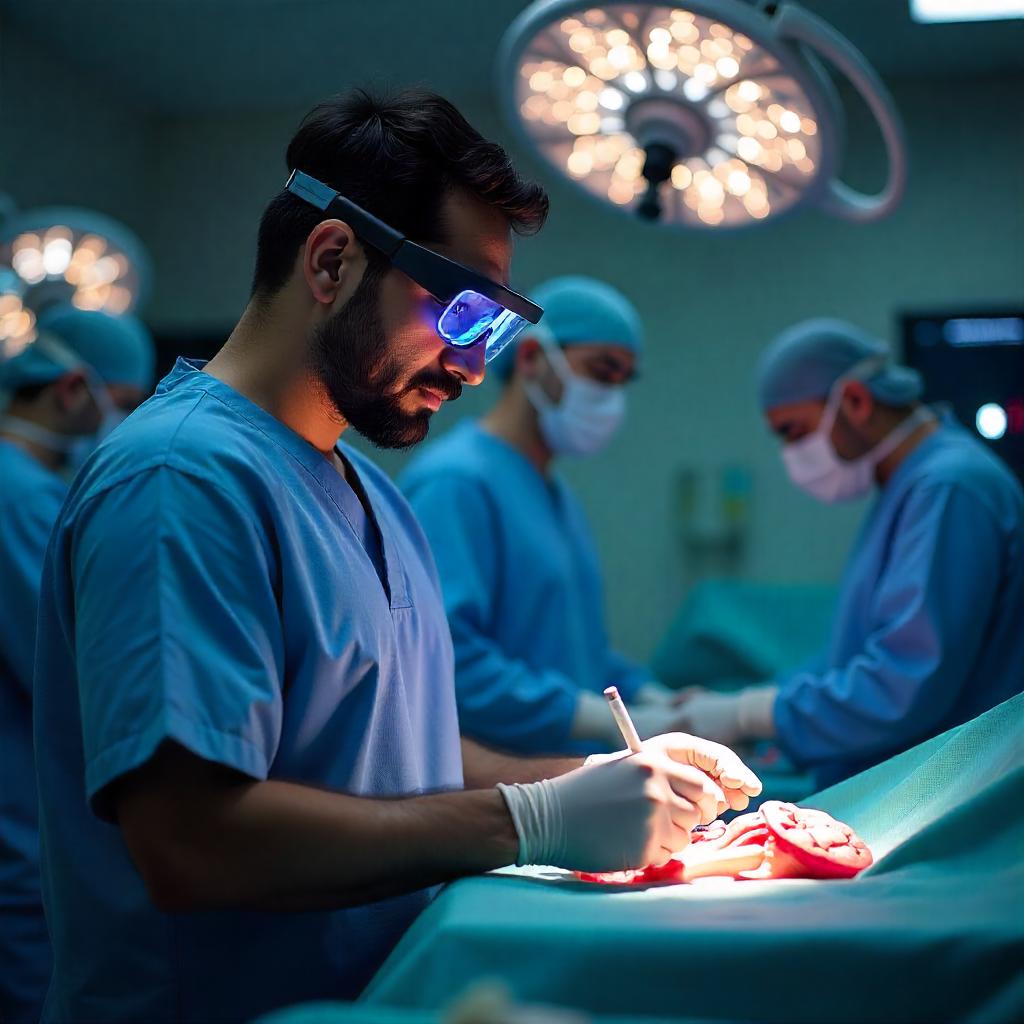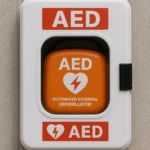
Augmented Reality Revolutionizing Surgery Training and Care

Introduction to Augmented Reality in Surgery
Evidently, the use of AR in the medical field has been a major shift, starting the process of rethinking the way the medical community improves its education and treats patients. This novel technology brings about the experience of virtual reality through layers of digital information; hence, it results in a more straightforward understanding of complex processes.
Why It’s Critical Today
- Enhanced Learning: The learning experience has changed. In this context, AR offers realistic simulations completed in a risk-free and immersive environment, thus allowing learners to improve their skills.
- Better Patient Relations: Through visual representations, the patient does not know the surgery process as abstract. They are, therefore, more likely to accept it as fact and better cooperate with the doctor if they can see what is going on. The selection of AR is quite a fabulous decision. Besides revolutionizing the training of users, AR has become an attractive spectacle for patients in healthcare. Its popularity has a global scope, thus making it a vehicle for understanding the world and fine-tuning the informed and active community—this is particularly indispensable to Gen Z and Gen Alpha as future drivers of technological progress.
Historical Context of Augmented Reality in Surgery
The use of Augmented Reality (AR) in operations has sprung from the development of technology and the medical staff’s requirement for new or better training methods. The operational integration of augmented reality was due to technologically improved medical training. However, the training was done in the past using conventional techniques, where future surgeons would go through textbooks and visualize static pictures. The progress and adoption of drones and satellite technologies have made telehealth outreach possible.
Evolution in Healthcare
- From Simplicity to Complexity: In the beginning, the training was centered on cadavers and models alone; however, at the moment, AR offers not only life-like simulations but also immersive, interactive lessons.
- Tech Meets Medicine: The partnership of technology and healthcare has resulted in surgical tools that increase precision and efficiency beyond what is currently possible.
Impact on Medicine and Public Health
AR will change the landscape of surgery by:
- Revolutionizing Training: Surgeons learn new procedures safely without putting patients at risk.
- Improving Outcomes: Clearer visualized data allows the surgeon to proceed more precisely and confidently with the surgery.
- Empowering Patients: AR gives people the opportunity to virtually see their surgery, which aids their understanding and trust. The pace of change in this area is so rapid that AR is becoming the flag bearer of innovation in technology and medicine. We are in the process of reshaping health care to become more technology-driven.
Current Landscape of Augmented Reality in Surgery
Innovations Reshaping Healthcare
Augmented reality (AR) is reshaping surgical training and patient interactions, aiming for a more immersive environment. In this respect, doctors can now train with virtual overlays of complex operations, which will ultimately build their self-confidence and accuracy during procedures.
- Improved Visuals Outcomes: AR enhances the anatomy’s undressing for the patient through unique and engaging AR app tools.
- Supporting Technologies: For example, surgical errors can be more than halved by using AR during procedures.
The Stats That Matter
- Significant 30% reduction in surgical errors.
- 70% of surgeons would learn to use AR tools instead of traditional methods. This alteration brings not only novelty but also better results to the operating room. AR is not just technology. It is a complete revolution.
Understanding the Impact of Augmented Reality in Surgery
Patients and Families Benefit
AR is at the forefront of not only surgical training but also patient care. It is the technology of the future that allows surgeons to see more clearly, making it less likely for them to make mistakes. It will make surgery more precise.
- Improved patient safety: The surgery is done more confidently, obtaining better outcomes.
- Enhanced experience for families: With real-time animation, family members can keep track of procedures. Thus, they find it easy to grasp and understand what the patient is going through.
Positive Changes in Treatment and Quality of Life
AR mixed with human moments is a potent combination that touches our lives profoundly. It is so good of imagination that you can see a child having surgery and the rest of the family joining the child and laughing because they are all assured of what they are seeing.
- Faster recovery times: Smaller, less-invasive surgeries are often the result of using AR for guidance.
- Higher satisfaction rates: They feel they have been informed and asked for ideas in planning their care. Moreover, by filling the dispersed gaps in knowledge, AR technology helps create a more transparent and understanding healthcare system, empowering both patients and families by taking them through each stage.
Impact of Augmented Reality in Surgery
Challenges for Healthcare Professionals
The implementation of augmented reality (AR) in the field of surgery is a means to solve the problems and the advancements brought by that technology way, and the challenges that come with it accompany the latter. It’s crucial because This training part can go on the rocks–surgeons will have to get the hang of the newfangled tools, which is not easy to perform while running out of time. The AR expenditure in healthcare institutions can burden the finance heads significantly. The Problems with implementation, which may involve things like the need for infrastructure and staff readiness, make it more tedious.
Opportunities for Improvement
However, all these problems do not mean that AR technology is ineffective. Instead, they are the way of specifying the directions in which the correct management of resources in the healthcare sector should be focused, as well as the way of satisfying the tasks of the medical staff:
- Enhanced Training: Surgeons can be their coordinators to show what they are performing and how they should be engaged with the people they are training to be those coordinators virtually before they make an incision.
- Patient Engagement: The use of visual tools assists the patients in understanding complicated processes, which in turn makes them feel more included during the process.
- Efficiency: The presentation of real-time data in overlays is undoubtedly vital. It simplifies things and thus improves the surgeon’s workflow. AR might also change how surgical teams connect and treat patients. The future of surgery is interactive and team-based.
The Impact of Augmented Reality in Surgery
Key Benefits in Today’s Healthcare Landscape
Augmented reality (AR) is a perfect tool for surgery. It is not just the technology as such; it can, in a way, revolutionize the way physicians and patients communicate and learn.
- Enhanced Training Efficiency: Through AR, surgeons can conduct virtual simulations of their operations, thus allowing them to familiarize themselves with the intricate procedures before they perform them. The flavor of the month: Using this method, you can collect all possible information regarding the subject of a virtual world and the risks of misinterpretation. Then, you will be ready to deliver the speech of your life as if you were at the Olympics.
- Improved Patient Outcomes: Using real-time data visualization during surgery eventually decreases the number of complications happening through the surgery. To support this, the other side of the coin is that they can also say what they would do if they had no information. In a world where people do not have the answer, AR technology is the hope for people. Instead of being painted a dark picture, technology is emerging as the key and most vital tool assisting the medical profession. Will you be medical technology’s forever supporter?
Challenges and Ethical Concerns of Augmented Reality in Surgery
Perspectives from Different Stakeholders
Patients
- Privacy Risks: AR tech may infringe on privacy by disclosing patient documents.
- Informed Consent: It is likely that if they were the patient, the information about the role of AR might be fuzzy and not understood.
- Researchers
- Data Integrity: Data of questionable reliability may be gathered by AR.
- Bias in Algorithms: The biases inherent in AR may compromise the quality of the surgical process.
- Regulators
- Lack of Standards: The ethical process a patient must undergo while using AR may not be defined by the law.
- Liability Issues: Who is responsible for a malfunction or an error?
- In short, AR in surgery opens up the possible ethical quandaries we must face and practical barriers to be addressed to use it safely and effectively.
Discovering Augmented Reality in Surgery
Engaging with the Evolution
Augmented Reality (AR) is revolutionizing the realm of surgery. Interested? You can enter into the joy with AR like this:
- Explore AR Apps: Look for AR-based medical apps and try them. These are not only fun but also provide incredibly detailed and immersive experiences for future doctors.
- Virtual Simulations: The workplace should support the use of virtual simulations in surgeons’ regular training. Wouldn’t it be great to master a technique in a controlled environment that won’t live in infamy if it goes wrong?
- Patient Education: Use AR tools to demonstrate different surgeries to the patient. A 3D representation of the operation can remove the mystique and raise interest in the procedure, replacing fear with comprehension. In a world of rapid technological change, embracing AR isn’t just clever but also revolutionary. Dive in, discover, and be part of this transformative journey!
The Transformative Power of Augmented Reality in Surgery
Future Insights
Augmented Reality (AR) is expected to transform surgeons training and patients’ experience surgeons training and patients’ experiences. Consider the operating room of the future, in which real-time data overlays, showcasing tools, and simulations visualize surgical procedures. Here’s what to expect:
- Real-Time Guidance: Surgeons will have all necessary information immediately.
- Enhanced Training: AR will enable realistic simulations to create an environment for the human body, reducing the risk during learning.
- Patient Engagement: Patients will be given visualization tools to inform them about their procedures. Embrace the future—AR isn’t only a technological invention and a new healthcare area. Get ready for remarkable career opportunities in biotech, where scientific discoveries are united with creativity!
Key Takeaways on Augmented Reality in Surgery
The introduction of augmented reality (AR) in the field of surgery is the key to training and patient involvement in the care process. We invite you to witness the development of the new AR-inspired medical equipment, of which you may be unaware yet. Each patient receives the most advanced diagnosis, while every activity is carried out much easier and more cost-effectively.
Why It Matters:
- Revolutionizes training: Surgeons can utilize real-life simulations, thus practicing their skills to the maximum level.
- Improves patient understanding: Visual presentation in the form of models helps patients master the critical steps of the treatment process more effectively.
- Streamlines operations: Real-time data overlays enable communication between interventional teams, ensuring patients’ safety and the best surgical outcomes. Stop Slacking! Keep up with these developments. Gain knowledge about AR surgery development, which is an important part of health care; every detail related to your health is important!












Post Comment